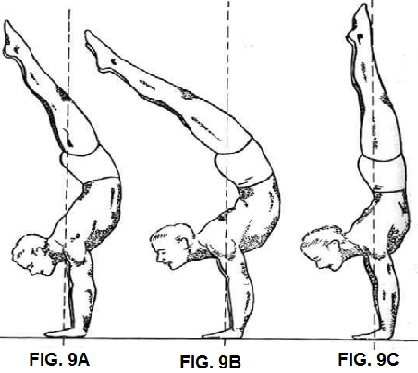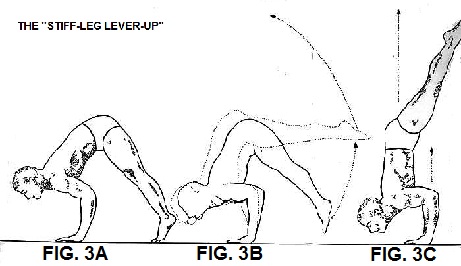The York Hand Balancing Course was published by the York Barbell Company. There is no specific author, and I have found no information that states who actually wrote it. It starts off with the following:
DID YOU EVER NOTICE when you see a group of strong men together that, sooner or later, they take time out for some handbalancing? Handbalancing to a bodybuilder, a weightlifter or any barbell man, is as natural as a duck taking to water. I think one reason for this is the fact that barbell trained men are so much stronger than others that the difficult balancing stunts are to them very easy. Furthermore, lifting barbells has given them unusual co-ordination which is very necessary to the would-be balancer.
While this may have been true in the 40’s when this book was originally written, it is not anymore. Most weightlifters and bodybuilders couldn’t hold a handstand, even against the wall, if they tried. But with more realistic and functional training this is swinging back the other way.
And if you’re a weightlifter, bodybuilder, or train in any other manner there’s no reason you can’t also do the handstand, and much more advanced hand balancing tricks.
There is actually two York Hand Balancing Courses, number 1 and 2. If you want you can get both in one volume over at Amazon.
The first book covers beginner to intermediate hand balancing stunts and the second even more advanced material.
While it’s a great introduction to the material, it doesn’t go into the same depth as you’ll find in other places like The True Art and Science of Hand Balancing and Hand Balancing Made Easy.
Here’s a couple examples of what you’ll find inside the York course:

I HAVE OFTEN BEEN ASKED ; “just what does the perfect handstand look like?” There are many expert handbalancers and it seems that each one has a different idea on this. Some insist that it is only perfect when the normal back arch (the amount the same person would have if standing erect on his feet) is shown in the handstand position (see Fig. 9A). There are others who prefer a very deep arch claiming it is more graceful and requires less effort once mastered (see Fig. 9B). A third prevalent group insist that only the ‘Continental’ type of handstand is correct (see Fig. 9C). The ‘Continental’ allows practically no arch – the legs and lower part of the body in line with the arms.
Of course as this was written in the 40’s the handstands taught are the antique or classic style, and not the straight handstands that are common today in the circus or gymnastics. Even it’s continental handstand is not what is commonly taught these days. Nothing is wrong with these positions at all, but its not the place to go for a modern straight handstand.

YOU WON’T FIND MANY chaps who can do this lever-up. It takes plenty of strength and flexibility. The starting position for the stiff-arm-stiff-legged is shown on Page 4, Fig. 4A. Lean well forward, keep the elbows straight at all times and bring the feet as close to the hands as possible without bending the knees. The closer you can get your feet to your hands the easier the stunt . Keep leaning forward until the feet leave the floor (as indicated by the solid lines in Fig. 4B, Page 4) and continue to raise the legs (Fig. 4B, dotted lines) from the hips only. As your feet come into the vertical position (Fig. 4C) you will have to draw your shoulders and head back (that is; come back from the extreme forward position) until the complete handstand has been secured. You must have perfect control through-out the entire movement.
So the York Handbalancing book is a great place to get some ideas for hand balancing exercises, but is not the most in-depth or complete manual available today.
If you’re like me you’ll want every book on hand balancing in your library so it’s certainly worth picking up.



